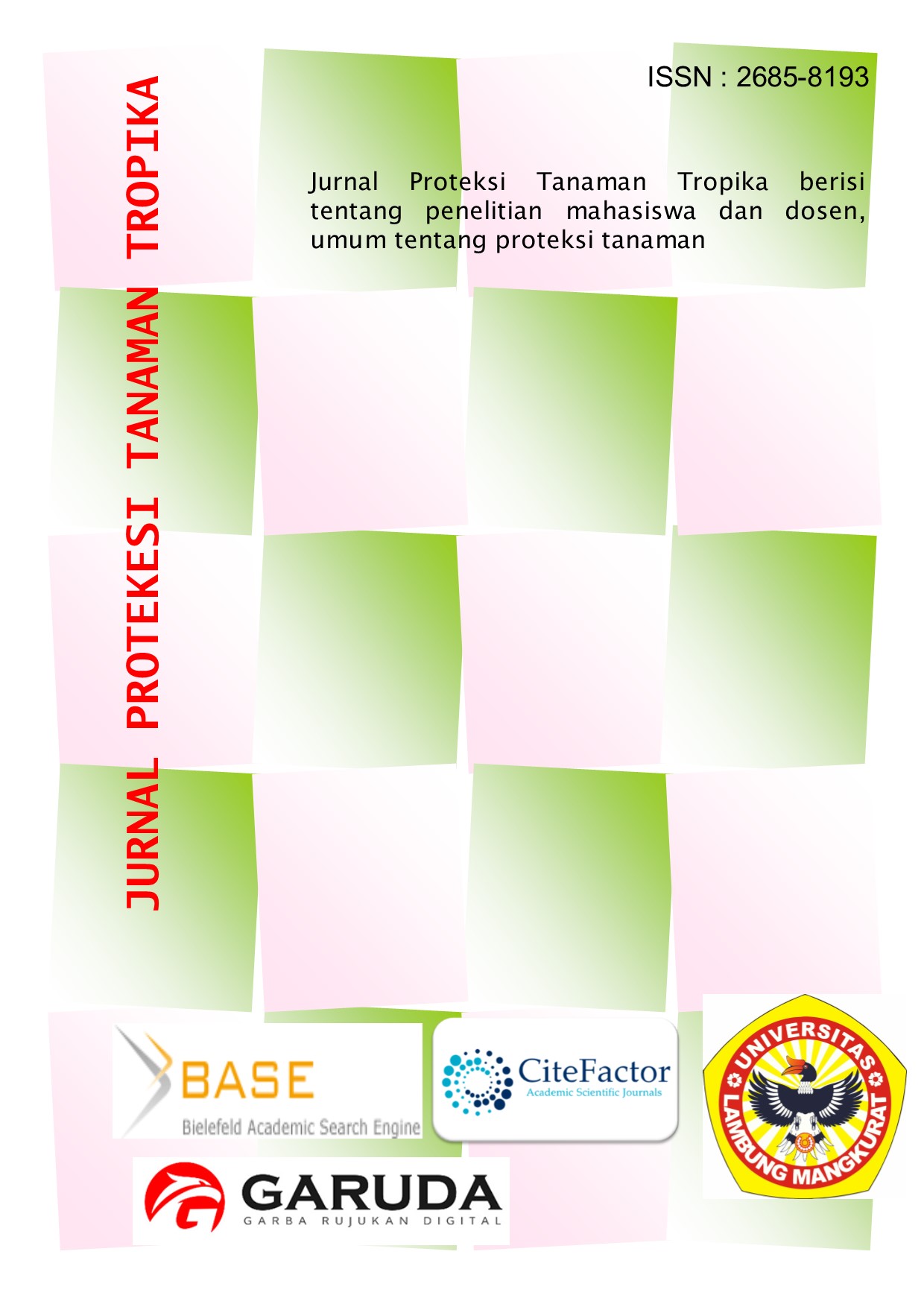Test of various isolates of Trichoderma sp. Against Fusarium Wilt Disease On Large Chili Plants
Abstract
Large chilies are a type of vegetable that is widely used in Indonesia due to the large demand for chili consumption by the public. However, there is also a decrease in production yields due to attacks by plant pests (OPT) in the form of diseases such as fusarium wilt caused by the fungus Fusarium sp. One safe and environmentally friendly alternative control that can be given to plants is Trichoderma sp. because the content of trichoderma is considered capable of having a positive impact on plants. This study aims to determine the isolates of Trichoderma sp. Different types are used, which isolate is more effective and is able to suppress fusarium wilt in large chili plants. The research method was a completely randomized design with one factor consisting of 5 treatments with 4 replications, a total of 20 experimental units. The research was carried out at the Phytopathology Laboratory, Department of Plant Pests and Diseases, Faculty of Agriculture, ULM and the Experimental Garden, Faculty of Agriculture, ULM. The result of this research is the application of Trichoderma sp. gives results that have a real effect on plant height and are able to reduce the percentage of cases of fusarium wilt disease in chili plants. The best treatment is for Trichoderma sp. isolate from Isolate from Hiyung Village, Tapin with the lowest percentage of disease incidence of 25% and stimulated plant height growth with a height of 28.09 cm.






